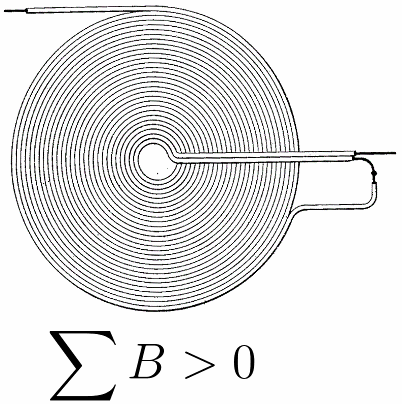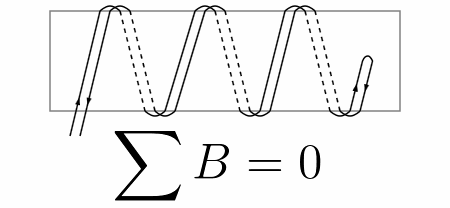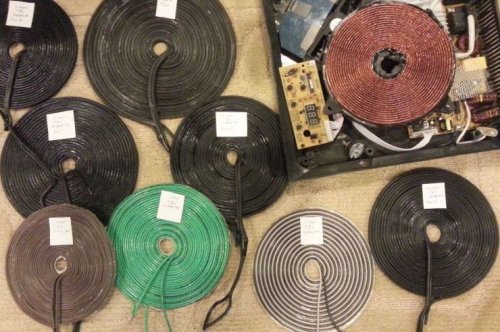Two types of bifilar coils — Tesla bifilar and Cooper bifilar
Functionally, two special types can be distinguished bifilar coils parallel winding: for coils of the first type, the currents in adjacent turns are directed in the same direction, while for coils of the second type, the currents in adjacent turns flow in opposite directions. A prominent representative of the first type of coil is the well-known bifilar coil Nikola Tesla, an example of a coil of the second type is the Cooper bifilar coil.
Both types of coils are unusual in that instead of winding a coil on a coil with a single wire, these coils are wound simultaneously with two wires, after which these wires are connected in series: in a Tesla-type coil, the end (conventionally) of one part of the coil is connected to the origin, its other part, while the free wires of the finished coil turn out on different sides of it, and in Cooper's bifilar, the ends of the two parts of the coil are combined on one side, while its free wires turn out from the other side.The winding methods described are used in both cylindrical and flat versions of bifilar coils.
The result is coils that behave radically differently in DC and AC circuits. Let's look at what the characteristics of these coils are and how these coils will behave with different types of current flowing through them.

Tesla bifilar in DC circuit
When a direct current flows through the coil, a permanent magnetic field proportional to the magnitude of that current appears around each of its turns. And by adding the magnetic fields (magnetic inductions B) of each subsequent turn with the magnetic fields of the previous turns, we get the total magnetic field of the coil.
In this case, for a direct current Tesla bifilar, it does not matter that the two parts of the coil are connected to each other in series, but what is important here is that the currents in each of its turns have the same magnitude and direction, as if the coil was wound with one solid wire - the inductance (proportionality of the coefficient between the current in the coil and the magnetic flux generated by it) turns out to be exactly the same, the magnetic field will be of the same magnitude as that of a conventional coil of the same shape, with the same number of turns.
Bifilar Tesla in AC circuit
When an alternating current passes through a bifilar Tesla coil, the characteristic coil begins to manifest itself as a pronounced turning capacitance, which is even able to "neutralize" the inductance at the resonant frequency. The turns, located relative to each other so that the potential difference between them in each pair is maximum, are an analogue of a capacitor connected in parallel to the coil.
It turns out that such a bifilar coil will pass unimpeded alternating current at a certain (resonant) frequency, providing only active resistance, as if it were a high-quality parallel oscillator circuit, and not a coil. Being connected to the circuit in parallel with the source of alternating EMF, such a coil can accumulate energy at the resonant frequency as a parallel oscillating circuit, where the energy is proportional to the square of the potential difference between adjacent turns.

Bifilar Cooper in DC circuit
In a bifilar winding, where the direct currents in adjacent turns have opposite directions and the same magnitude (namely, such a picture is observed with a direct current in a coil made of the "bifilar" type of Cooper), the total magnetic field of the coil will be equal to zero because the magnetic fields in each pair of turns neutralize each other. As a result, a coil of this type will behave with respect to direct current as a conductor of pure active resistance and will not show any inductance. This is how wire resistors are wound.
Cooper bifilar in an alternating current circuit
When an alternating current is applied through a coil whose turns are arranged relative to each other in Cooper's «bifilar» type, the pattern of the magnetic field will depend mainly on the frequency of the current. And if the length of the wire in such a coil turns out to be commensurate with the wavelength of the alternating current passing through it, then the external magnetic field on such a coil can actually be obtained as on a long line or antenna.

